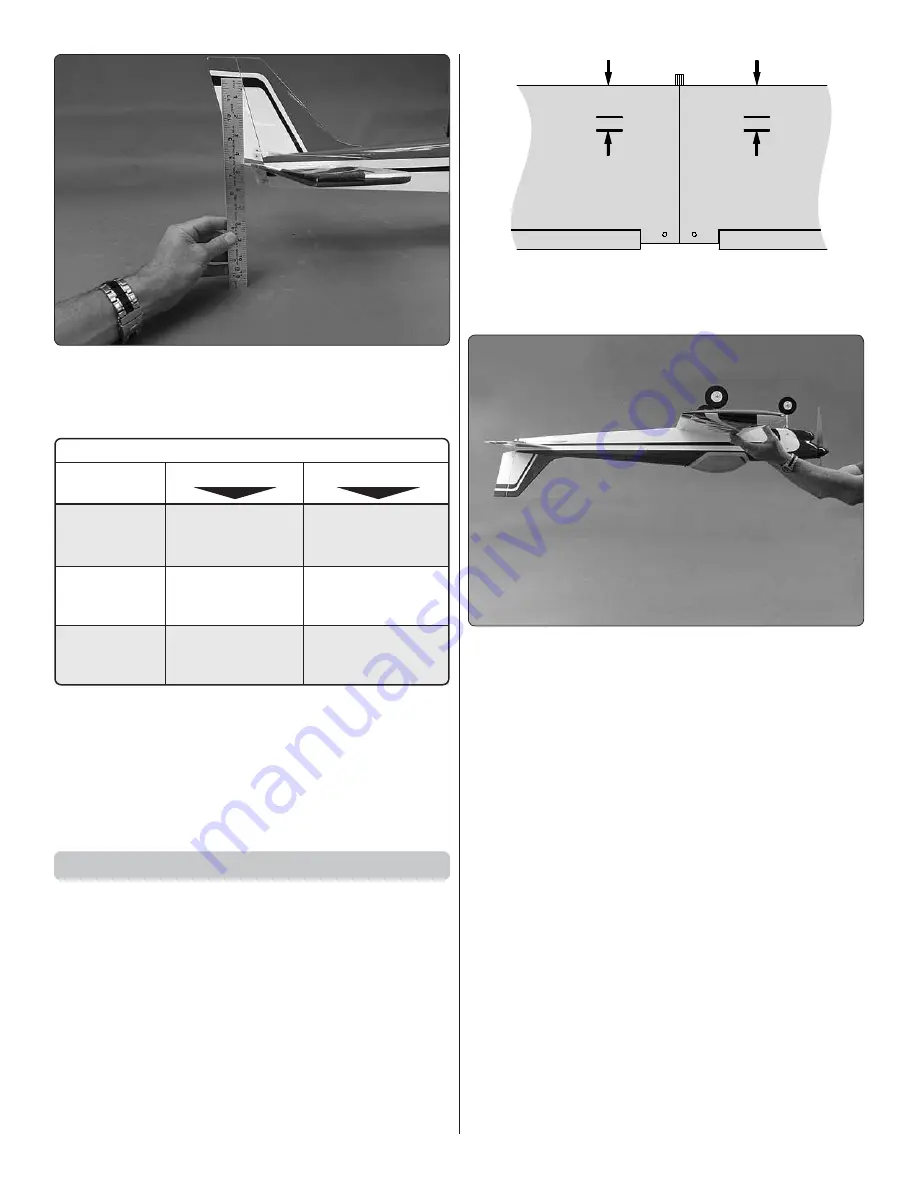
20
❏
1. It’s probably easiest to check and set the control
throws with the wing mounted on the fuselage. Mount the
wing. Check and set the control throws according to the
measurements below:
These are the recommended control surface throws:
ELEVATOR
HIGH
LOW
1/2"
[ 13 mm ]
18°
3/8"
[ 10 mm]
14°
1/2"
[ 13 mm]
24°
3/8"
[ 10 mm]
19°
1"
[ 25 mm ]
27°
3/4"
[19 mm]
21°
RUDDER
AILERONS
Up & Down
Up & Down
Right & Left
❏
2. Adjust the control throws as necessary by using the
programming in your transmitter and/or reconnecting the
pushrods to holes farther out or farther in on your servo arms
and/or the control horns.
❏
3. Once you have the nose wheel centered and the
carburetor arm working properly, tighten the set screws in
the screw-lock connectors with threadlocker.
Check the C.G.
Same as the control throws, the C.G. has a great effect on how
the model fl ies. If the C.G. is too far forward the model may
be too stable and unresponsive to control inputs. If the C.G.
is too far aft the model may be too responsive and instable.
❏
1. The model should be completely ready to fl y with all
components installed (and an empty fuel tank if using a
glow engine). If you’ve installed a brushless motor, leave the
battery out of the plane, but keep it handy for positioning on
the bottom of the fuselage to determine where the battery
should be mounted inside.
❏
2. If you’ve installed a brushless motor, reinstall the propeller
and spinner.
57mm
83 mm
2-1/4"
3-1/4"
The recommended C.G. is 2-1/4"− 3-1/4"
[ 57mm − 83 mm] back from the leading edge
of the wing.
❏
3. Use a Great Planes C.G. Machine to balance the model
according to the measurements specifi ed, or mark the balance
range on the top of the wing and lift the model upside-down
with your fi ngertips. If you’ve installed a brushless motor
position the battery on the bottom of the fuselage to get the
model to balance.
As long as the model balances anywhere within the specifi ed
range it is acceptable (but less-experienced pilots should
perform fi rst fl ights with the Sport balanced in the middle or
forward half of the range (slightly nose heavy).
❏
4. If the Sport doesn’t balance where specifi ed, move the
receiver battery or motor LiPo battery or add stick-on lead
ballast to the nose or tail to achieve the correct C.G.
❏
5. If you’ve made any adjustments by adding ballast or
moving components check the C.G. again before fl ying.





































